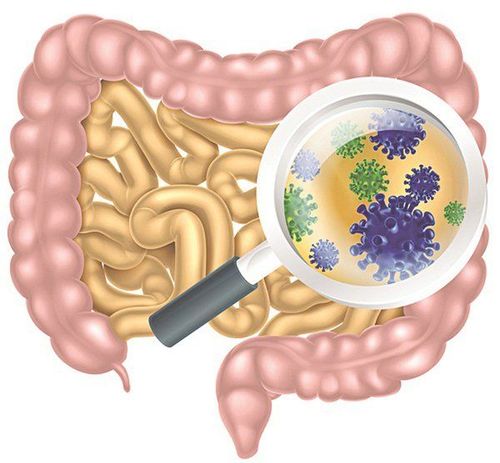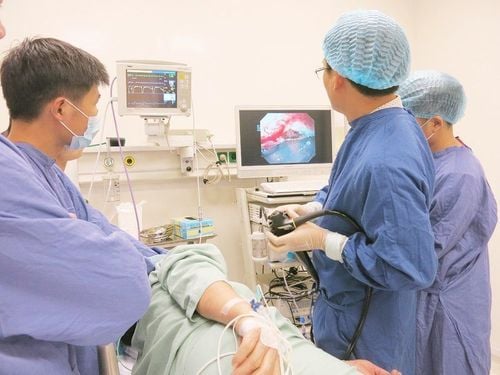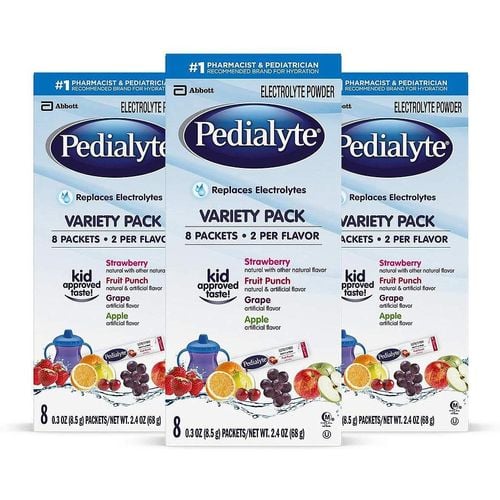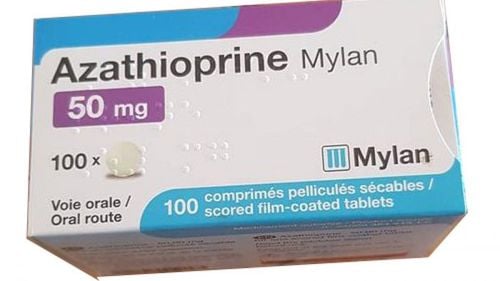This is an automatically translated article.
Posted by Master, Doctor Mai Vien Phuong - Department of Examination & Internal Medicine - Vinmec Central Park International General Hospital
Patients often question the role of diet in inflammatory bowel disease (IBD). Despite the interest in this topic, there is little consensus on how to address diet in IBD patients.
1. Overview of the role of diet in inflammatory bowel disease
Animal studies and population-based human studies serve as the knowledge base for IBD risk associations. Such studies have demonstrated the probable positive effects of omega-3 fatty acids, amino acids, plant polysaccharides, vitamin D, fiber, fruits, vegetables, and fish, in addition to harmful effects. of high total fat, red meat, omega-6 fatty acids, food additives and the general western diet. Enteral nutrition, the most studied dietary therapy in IBD, has demonstrated benefit in patients with Crohn's disease.
Physicians' and patients' wishes for the treatment of IBD In a recently proposed IBD patient needs hierarchy, there is a contradiction between the patient's needs and the patient's focus. doctors, especially when it comes to the role of diet. Clinicians tend to focus on identifying and achieving treatment goals while patients are often concerned with what they can eat and whether diets are helpful or harmful for them. with IBD. Although the role of diet in IBD is increasingly being discussed, if at all, consensus on the topic is still limited.
Inflammatory bowel disease epidemiology The incidence and prevalence of both Crohn's disease (CD) and ulcerative colitis (UC) have increased over time, and it is suggested that diet may play a role some role. Although the incidence and prevalence of IBD remain highest in the industrialized regions of North America and Western Europe, there has been an increase in previously low prevalence areas, including Asia, South America and the Middle East. The reason for this global change is unclear, but several factors have been suggested, including infections, hygiene standards, medications, and pollutants. Notably, diet has also emerged as a major factor that may contribute to the increased incidence of IBD in developing countries, largely due to the rise of Western diets across the world. world. Furthermore, migration from low prevalence to high prevalence areas has been shown to increase the risk of developing IBD and has recently been associated with changes in microbiome composition. It is likely that diet and other factors noted are similarly associated with this risk. Furthermore, obesity has been suggested as a diet-related lifestyle factor that may be associated with an increased risk of IBD. These parallel observations suggest that diet may play a role in the changing global epidemiology of IBD.

2. The role of some amino acids in inflammatory bowel disease
Certain amino acids have also been studied for their role in inflammatory bowel disease. Glutamine and arginine are thought to have immunomodulatory effects and have been shown to ameliorate measures of inflammation in a mouse model of colitis. In addition, histidine, a prodrug of histamine, inhibited proinflammatory cytokine production in a rat colitis model. Threonine, possibly through its beneficial effects on intestinal mucus production, and tryptophan have also been shown to reduce colitis in porcine and rat models. Similarly, plant polysaccharides, in addition to fibrous plant products, have largely been shown to have anti-inflammatory effects. The proposed mechanism for this effect is increased production of SCFA, which has the effect of improving the barrier function and immune tolerability of color cells. Other plant-derived compounds, including curcumin, green tea, fermented cereals and polyphenols have also demonstrated anti-inflammatory properties in various animal models.
Role of vitamins and minerals
Furthermore, several vitamins and minerals have been investigated in the pathogenesis of IBD using animal models of inflammatory bowel disease. Vitamin D has notably been recognized as a regulator of immune pathways as demonstrated in several animal models. In IL-10 knockout mice, vitamin D and vitamin D receptor deficiencies have been shown to accelerate IBD symptoms and death. Vitamin D has also been shown to maintain mucosal integrity in a mouse model of DSS-induced colitis by attenuating the effects of photoreceptors. Calcium has been shown to play an important role in enhancing these effects of vitamin D on immune regulation. In addition to vitamin D, dietary and iron supplementation has been shown to have a potential role in intestinal inflammation through the formation of oxygen free radicals and also through altering the gut microbiota. . A model of Crohn's disease-like ileitis shows that depletion of iron in the blood prevents inflammation.
Role of food additives
Finally, food additives in general have demonstrated anti-inflammatory effects in animal models. Carboxymethylcellulose and polysorbate-80 have been studied in IL-10-type mice and have been shown to disrupt intestinal barrier function, ultimately leading to increased intestinal inflammation. Carrageenan and titanium dioxide (TiO2) have also been shown to increase intestinal inflammation by disrupting the intestinal barrier. Malodextrin, a soluble dietary fiber, has been shown to increase the total amount of IgA in the gut. This effect is also associated with increased SCFA production, so it is not clear whether this effect is anti-inflammatory or anti-inflammatory.
Human studies of dietary adverse effects on inflammatory bowel disease The association of dietary risk with associations between IBD risk and specific dietary factors has been established. The study was conducted primarily using two large population-based cohorts, the European Prospective Survey of Cancer and Nutrition (EPIC) and the Nurses' Health Study. The association of risk with fatty acid intake was studied by both groups. In the EPIC cohort (n = 203,193; 126 UC cases), a high intake of linoleic acid (an omega-6 fatty acid found in vegetable oils) was associated with an increased risk of developing UC (OR = 2.49.95). %CI 1.23 -5.07, p = 0.01). In contrast, high consumption of docosahexaenoic acid (an omega-3 fatty acid found in fish oil) was associated with a lower risk of developing UC (OR = 0.59, 95% CI 0.37-0.94, p = 0.03). Similarly, the Nurses' Health Study found that an increased omega-3:omega-6 ratio was also associated with a reduced risk of developing UC (multivariate HR 0.69, 95% CI 0.49-0 .98, p = 0.03). Nurses' Health Study found no link between fatty acid intake and risk of CD.

The role of fiber content in the treatment of inflammatory bowel disease
The EPIC Health Study Group was also used to examine many other dietary factors. A recent analysis from the EPIC study (n = 401,326; 104 CD cases, 221 UC cases) examined dietary fiber intake and found no significant association between fiber intake and risk for CD or UC. However, another study (with patient numbers n = 170,766; 269 cases of CD, 338 cases of UC), found that high fiber intake was associated with a 40% reduced risk of CD (HR 0). .59 multivariable, 95% CI 0.39-0.90) but not UC. This protective association with CD risk appears to be greatest for fruit-derived fiber. Furthermore, the Health Study II cohort (n = 39,511; 70 CD cases, 103 UC cases) examined high school diets using a validated food frequency questionnaire. and showed that a high school diet that included plenty of fruits, vegetables, and fish was associated with a reduced risk of CD but not UC. It should be noted that these findings have a high degree of recall bias. Finally, another study (number of patients enrolled n = 165,331; 261 incident cases of CD, 321 incidents of UC) and EPIC cohort (n = 262,451; 193 incident cases of UC) , 84 incident cases of CD) demonstrated no risk association with 46 dietary iron and heme intake and alcohol intake.
Role of Vitamin D
Vitamin D is increasingly recognized for its potential role in IBD and for its association with both IBD risk and IBD outcomes. The Nursing Health Study cohort (n = 72,719; 122 CD cases, 123 UC cases) showed an association between increased plasma vitamin D concentrations predicted to 25(OH) and reduced risk CD baseline (multivariate HR 0.55, 95% CI 0.30-1.00, p = 0.02). In addition, increased vitamin D intake was associated with a reduced risk of UC (HR 0.64, 95% CI 0.37-1.10, p = 0.04). Furthermore, 5-year follow-up data from a longitudinal IBD registry suggest that low vitamin D levels are associated with multiple steroid use, biologics, narcotics, hospitalization, acute department visits and surgery (p < 0.05) in patients with CD and UC. Collectively, these findings support a potential protective role for vitamin D in relation to IBD risk and IBD outcomes.
The associations with dietary IBD risk were also investigated in a frequently referenced systematic review by Hou et al, including 19 studies, 2,609 IBD patients and 4,000 controls. Notably, a high intake of total fats, PUFAs, omega-6 fatty acids, and meat is associated with an increased risk of CD. In addition, high fiber and fruit consumption is associated with a reduced risk of CD, and high vegetable consumption is associated with a reduced risk of UC
Currently, Vinmec International General Hospital is a prestigious address trusted by many patients in performing diagnostic techniques for digestive diseases, diseases that cause chronic diarrhea, Crohn's disease, inflammatory bowel disease.. Along with that, at Vinmec Hospital, screening for stomach cancer and gastric polyps is done through gastroscopy with Olympus CV 190 endoscope, with NBI (Narrow Banding Imaging) function. narrow light frequency) results in clearer mucosal pathological analysis results than conventional endoscopy, detection of ulcerative colitis lesions, early gastrointestinal cancer lesions... Vinmec Hospital with modern facilities and equipment and a team of experienced experts who are always dedicated in medical examination and treatment, customers can be assured of gastroscopy and esophagogastroduodenoscopy services here. .
Please dial HOTLINE for more information or register for an appointment HERE. Download MyVinmec app to make appointments faster and to manage your bookings easily.
References
Siegel, CA. Refocusing IBD patient management: personalized, proactive, and patient-centered care. AmJ Gastroenterol. 2018;113:1440-1443. Malodecky NA, Soon IS, Rabi DM, Ghali WA, Ferris M, Chernoff, G et al. Increasing prevalence and prevalence of the inflammatory bowel diseases with time, based on systematic review. Gastroenterology. 2012;142(1)46-54 e42. Shivasshankar R, Tremaine WJ, Harmsen WS, Loftus EV Jr. Incidence and prevalence of Crohn's disease and ulcerative colitis in Olmsted County, Minnesota from 1970 through 2010. Clin Gastroenterol Hepatol. 2017;15(6)857-863. Joseph D. Frasca, Adam S. Cheifetz, Diet and Inflammatory Bowel Disease: What is the Role? Practical gastroenterology • june 2019














